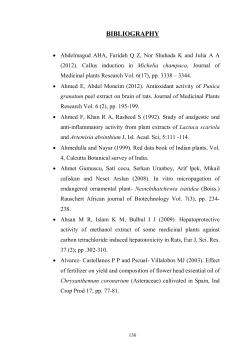
WHAT IS CLIL ???
WHAT IS CLIL ??? Da alcuni anni nel Liceo Linguistico “Da Vinci” di Alba viene sperimentata la metodologia CLIL (Content and Language Integrated Learning), anticipando quanto previsto dalla recente riforma dei Licei. La metodologia CLIL ha come obiettivo principale l'apprendimento integrato di lingua straniera (in questo caso: la lingua Inglese) e contenuti di una disciplina specifica (Biologia). Nell’anno scolastico 2010/2011 due classi dell’indirizzo linguistico (2aB e 2aC) hanno affrontato lo studio della fotosintesi in Inglese; allo studio teorico dell’argomento ha fatto seguito un’attività pratica di laboratorio, nella quale gli alunni hanno allestito dei vetrini per l’osservazione microscopica della struttura degli stomi vegetali; l’attività di laboratorio è stata relazionata in lingua Inglese. Le diapositive che seguono contengono una sintesi dei testi utilizzati per lo studio della fotosintesi. Classi coinvolte: 2aB e 2aC Linguistico Docente Lingua Inglese (classe 2aB): prof.ssa Renata Ceste Docente Lingua Inglese (classe 2aC): prof.ssa Gabriella Martinelli Docente Biologia (classi 2aB e 2aC): prof.ssa Roberta Bruno PHOTOSYNTHESIS • • • • • • • Autotrophes and Eterotrophes Equation of photosynthesis Products of photosynthesis Factors affecting photosynthesis Stages of photosynthesis Chloroplasts Stomata AUTOTROPHES AND HETEROTROPHES An autotroph, also called a producer, is an organism that produces complex organic compounds (such as carbohydrates) from simple inorganic molecules using energy from light (by photosyntesis) or inorganic chemical reactions (chemiosyntesis). They are the producers in a food chain, such as plants on land or Algae in water. An heterotroph (such as animals and human beings) is an organism that cannot produce organic compounds from inorganic molecules and uses organic carbon for growth and as energy source. EQUATION OF PHOTOSYNTHESIS Photosynthesis comes from the words synthesis (formation or putting together) and photo (light). In the context of plants and cell enrgy, the word photosynthesis means using light to produce food. Green plants can absorb water from the the soil and carbon dioxide from the air, and with the help of light, transform them into sugar. The residue oxygen produced during this process in released into the air: it is the same oxygen that human beings and animals use to breathe. Plants in this way nurture themselves by transforming raw materials onto organic products. Plants need an enormous amount of energy. In this case the radiant energy is given by solar light from the sun which is captured in the photosynthetic pigment called chlorophyll. Glucose is needed for a process called respiration; it is necessary for the growth of the plant and for plant cell wall; when glucose is not used immediately, it can be stored as starch; this is insoluble, and plants use it as a food store. FACTORS AFFECTING PHOTOSYNTESIS The rate of photosyntesis may be limited by factors including: • • • • insufficient carbon dioxide; insufficient light levels; low temperature; insufficient water. Plant growers may make an artificial environment in their greenhouses so that the plants grow quickly. They may use electric lighting, and heaters to keep the plants warm. They may also release carbon dioxide into the air to increase its concentration. STAGES OF PHOTOSYNTHESIS Photosynthesis is a complex process that can be divided into two related stages. 1) The first stage (light-dipendent reactions) takes place at the chloroplast’s inner thylakoid membrane system (grana). In the course of these reactions, sunlight energy splits water; oxygen is a byproduct of these reactions. The sunlight-dependent reactions also result in the formation of reduced coenzyme NADPH and ATP. 2) ATP and NADPH, together with carbon dioxide, are reactants in the second stage (light-independent reactions), that occurs in the stroma. Carbon and oxygen from carbon dioxide are combined with hydrogen to make sugar (glucose). This is the synthesis part of photosynthesis. ATP and NADPH are converted back into ADP and NADP+. The light-dependent and light-indipendent reactions thus from a cycle in which the net inputs are water and carbon dioxide, and the net outputs are oxygen and carbohydrates. CHLOROPLASTS Chloroplasts are the photosynthetic organelles in green part of plants such as leaves. They contain chlorophyll. Chloroplasts are biconvex discs found in the plant cells. They have a double membrane around them, and the inner part forms a system of branching membranes called thylakoids. These membranes are stacked up in some parts of the chloroplast to form grana (singular granum). Grana are linked together by lamellae (thin, flat pieces of thylakoid membrane). Chlorophyll is located in the grana. Between grana there is a water matrix called stroma. STOMATA The leaf blade is thin to allow carbon dioxide to diffuse from the air into the leaf cells and enter the pores called stomata (singular stoma). A stoma consists of two guard cells. They separate to form a pore between them. Through these pores pass all the gases (oxygen and carbon dioxide). When guard cells are swollen, stomata are open; when they are limp, they close.
© Copyright 2025





